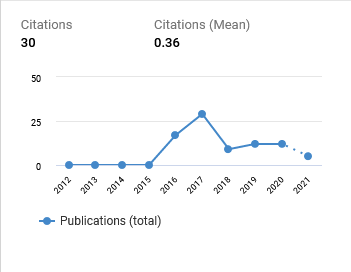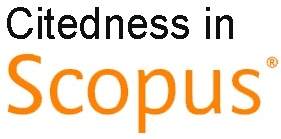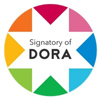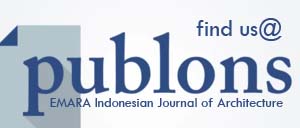Application of Green Building Aspects in Community Residential Houses
DOI:
https://doi.org/10.29080/eija.v9i1.1591Keywords:
green building, historical houses,, modern houses, sustainability, energy efficiencyAbstract
This paper delves into the application of green building aspects in historical and modern homes, driven by the imperative to address the environmental impacts of building construction. Against the backdrop of evolving human needs and architectural forms, the study aims to assess the extent of green building implementation in typical old and modern houses. Methodologically, the research conducts a comprehensive analysis of six key aspects of green building—Appropriate Site Development, Energy Efficiency and Conservation, Water Conservation, Material Resources and Cycle, Indoor Health and Comfort, and Building Environment Management—through random observations of representative buildings from different time periods. The results indicate a notable discrepancy in the adoption of green aspects between historical and modern homes, with historical houses exhibiting a higher degree of integration. Specifically, historical homes scored 41 points in green aspect implementation, while modern houses scored 22 points. These findings underscore the importance of prioritizing sustainable building practices to mitigate environmental impacts and promote holistic well-being in residential constructions.
Downloads
References
Awadh, O. (2017). Sustainability and green building rating systems: LEED, BREEAM, GSAS and Estidama critical analysis. Journal of Building Engineering, 11, 25–29. https://doi.org/10.1016/j.jobe.2017.03.010 DOI: https://doi.org/10.1016/j.jobe.2017.03.010
Azizah, R.-, Wardani, E. D., & Mardikasari, A. A. (2017). Measuring Greenship Homes in Residential Houses with a ‘Green’ Concept in Urban Areas. Jurnal Teknik Sipil Dan Perencanaan, 19(1), Article 1. https://doi.org/10.15294/jtsp.v19i1.9494
Baca, L. F. G., & López, F. J. S. (2018). Traditional architecture and sustainable conservation. Journal of Cultural Heritage Management and Sustainable Development, 8(2), 194–206. https://doi.org/10.1108/JCHMSD-06-2017-0036 DOI: https://doi.org/10.1108/JCHMSD-06-2017-0036
Desideri, U., & Asdrubali, F. (2018). Handbook of Energy Efficiency in Buildings: A Life Cycle Approach. Butterworth-Heinemann.
GBCI. (n.d.). Greenship Homes Ver 1.0—Site. Green Building Council Indonesia. Retrieved 2 April 2024, from https://greenshiphomes.org/
Hong, J., Shen, G. Q., Feng, Y., Lau, W. S., & Mao, C. (2015). Greenhouse gas emissions during the construction phase of a building: A case study in China. Journal of Cleaner Production, 103, 249–259. https://doi.org/10.1016/j.jclepro.2014.11.023 DOI: https://doi.org/10.1016/j.jclepro.2014.11.023
Hu, H., Geertman, S., & Hooimeijer, P. (2014). Green Apartments in Nanjing China: Do Developers and Planners Understand the Valuation by Residents? Housing Studies, 29(1), 26–43. https://doi.org/10.1080/02673037.2014.848268 DOI: https://doi.org/10.1080/02673037.2014.848268
Karimi, H., Adibhesami, M. A., Bazazzadeh, H., & Movafagh, S. (2023). Green Buildings: Human-Centered and Energy Efficiency Optimization Strategies. Energies, 16(9), Article 9. https://doi.org/10.3390/en16093681
Mundo-Hernández, J. J., Hernández-Alvarez, J., Valerdi-Nochebuena, C., & Sosa-Oliver, J. (2014). Designing Sustainable and Healthy Homes. European Scientific Journal, ESJ, 10(20), Article 20. https://doi.org/10.19044/esj.2014.v10n20p%p
Patil, M., Boraste, S., & Minde, P. (2022). A comprehensive review on emerging trends in smart green building technologies and sustainable materials. Materials Today: Proceedings, 65, 1813–1822. https://doi.org/10.1016/j.matpr.2022.04.866
Rejeki, V. S., Kiswari, MD. N., & Saraswati, R. D. (2018). Penerapan Konsep Rumah Tinggal Hijau Greenship Homes pada Tipe Rumah Tinggal Terencana di Semarang | Temu Ilmiah. Prosiding Temu Ilmiah 2018. Temu Ilmiah Ikatan Peneliti Lingkungan Binaan Indonesia (IPLBI) 7, Semarang. https://doi.org/ttps://doi.org/10.32315/ti.7.f114
United Nation. (2015). Transforming our world: The 2030 Agenda for Sustainable Development. United Nation Department of Economic and Social Affairs Sustainable Development. https://sdgs.un.org/2030agenda

Downloads
Published
How to Cite
Issue
Section
Categories
License
Copyright (c) 2023 Yudhistira Anggraini

This work is licensed under a Creative Commons Attribution-ShareAlike 4.0 International License.
- Authors retain copyright and grant the journal right of first publication with the work simultaneously licensed under a Creative Commons Attribution ShareAlike License that allows others to share the work with an acknowledgment of the work's authorship and initial publication in this journal.
- Authors are able to enter into separate, additional contractual arrangements for the non-exclusive distribution of the journal's published version of the work (e.g., post it to an institutional repository or publish it in a book), with an acknowledgment of its initial publication in this journal.
- Authors are permitted and encouraged to post their work online (e.g., in institutional repositories, pre-print sites, or on their website) prior to and during the submission process, as it can lead to productive exchanges, as well as earlier and greater dissemination of published work.
































